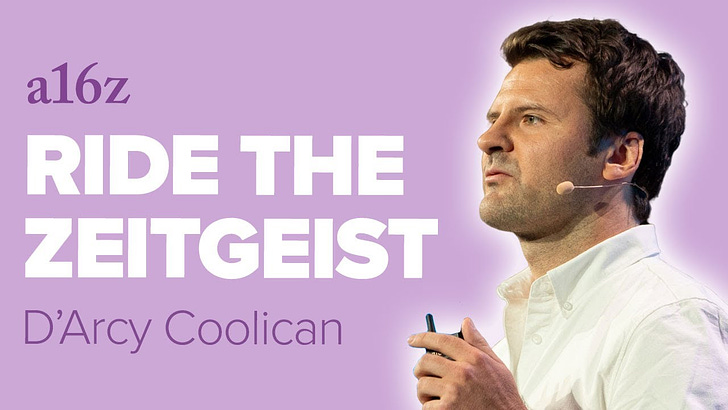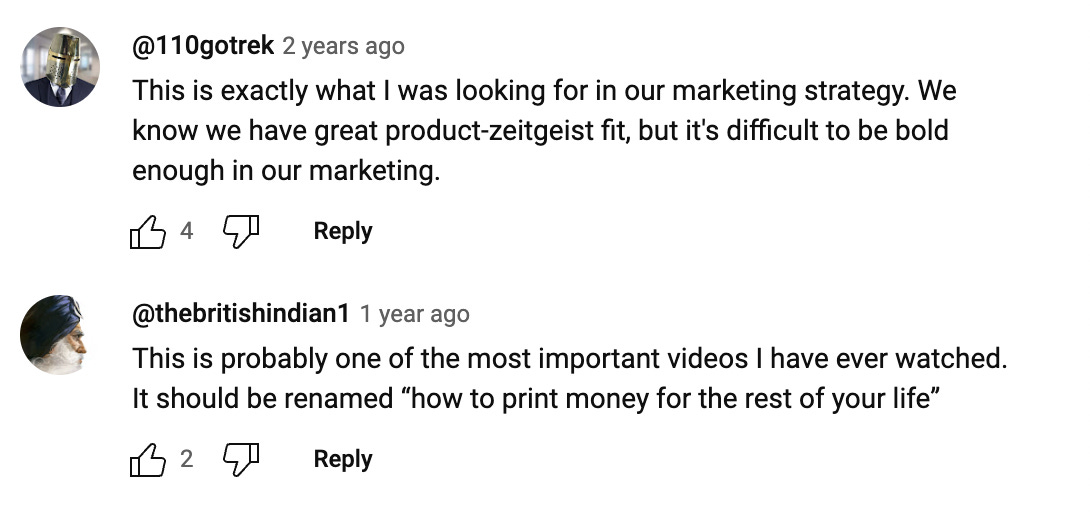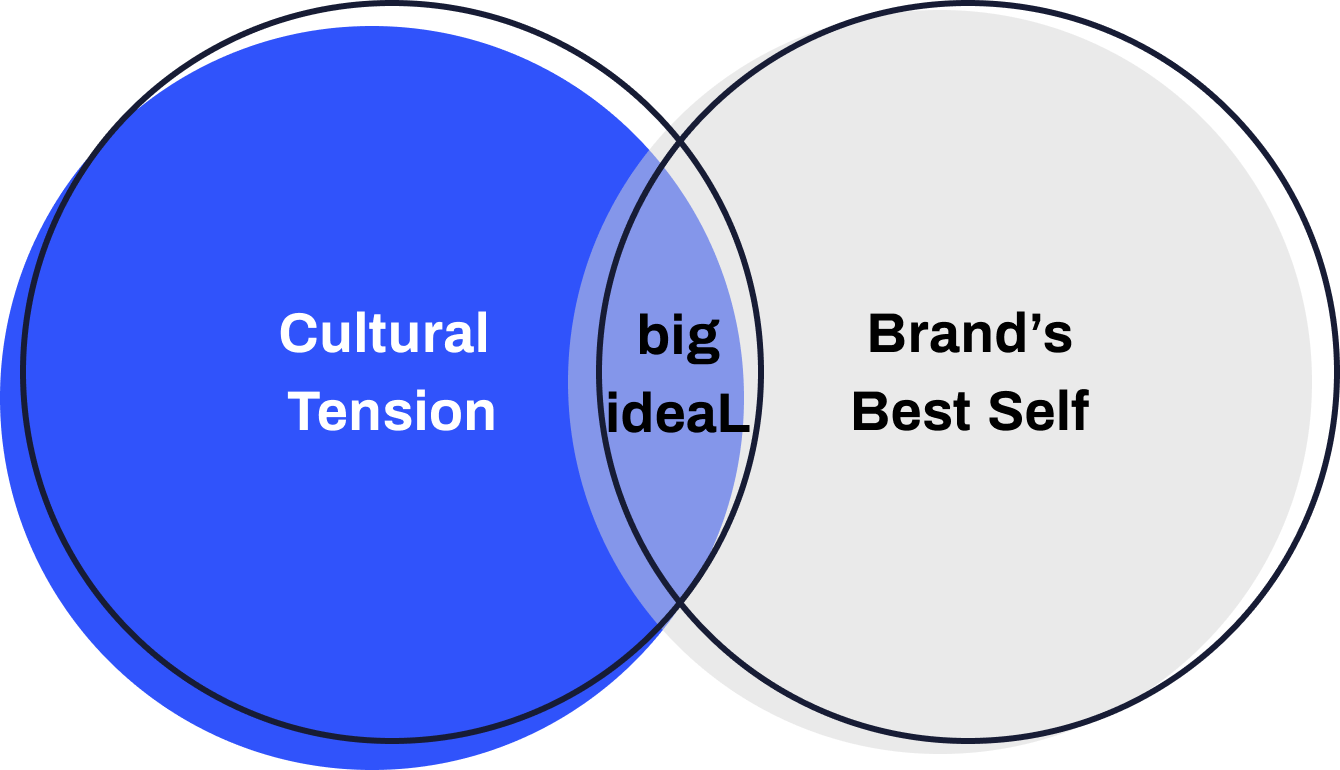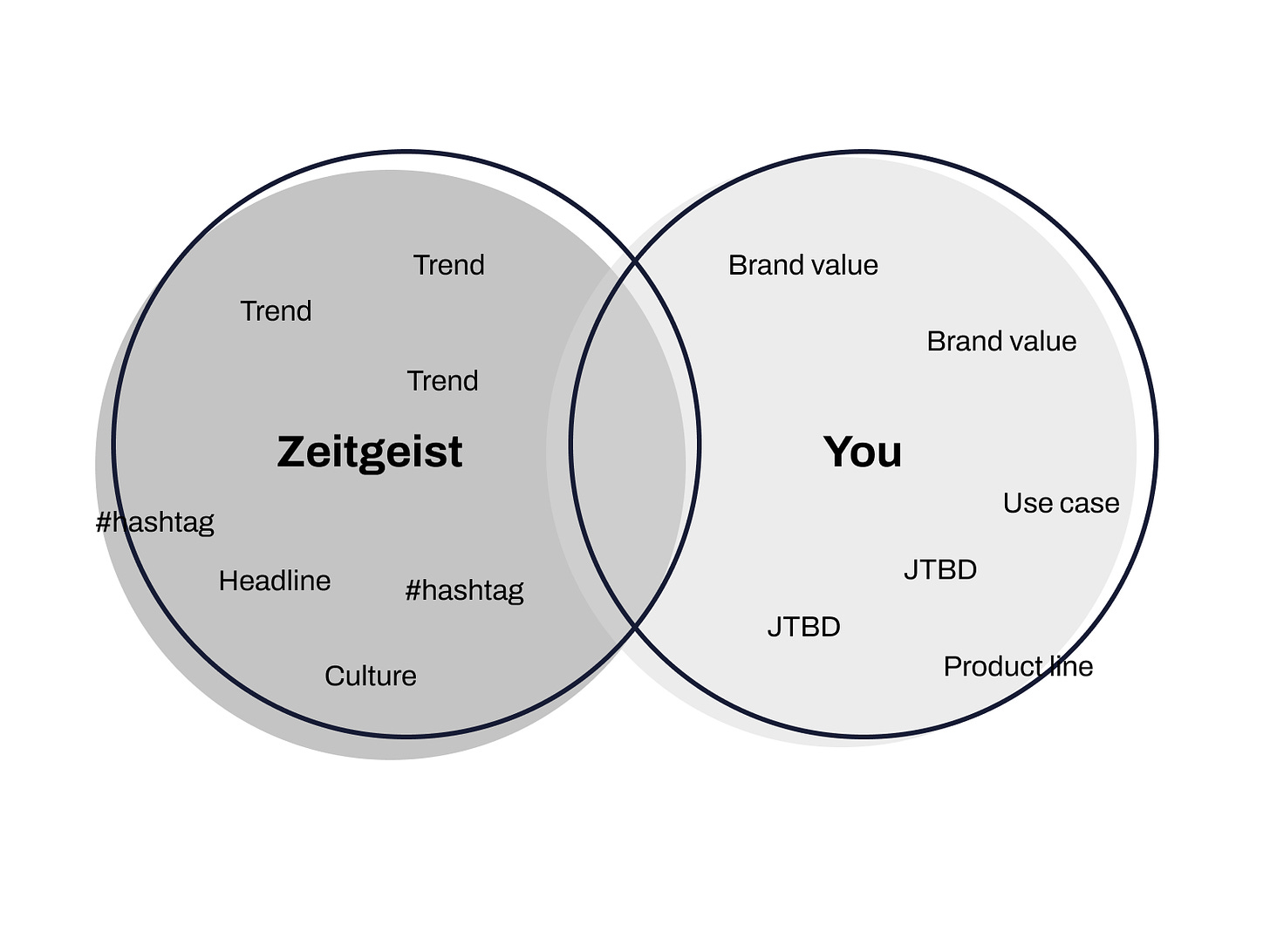Hi there 👋
One of the traditions for my newsletter is to spend the last couple weeks of the year reviewing my “Best Of” books, podcasts, articles, and more from the past 12 months. I’ll get into those lists later on in December. Books will be one of the issues, and as a teaser for anyone who loves book lists (or needs holiday shopping ideas), the National Book Award winners are here. Spoiler: I haven’t read very many of them, so my Best Of list will look quite different.
Wishing you a great week ahead,
Kevan
(ᵔᴥᵔ)
Thank you for being part of this newsletter. Each week, I share playbooks, case studies, stories, and links from inside the startup marketing world and my time at Oyster, Buffer, and more.
Say hi anytime at hello@kevanlee.com. I’d love to hear from you.
The marketer’s handbook to product-zeitgeist fit
You’ve heard of product-market fit.
You may have even heard of product-channel fit.
But have you heard of product-zeitgeist fit?
The concept comes from D’Arcy Coolican, a former startup founder and a former investor at Andreesen Horowitz. Check out the blog post above and the YouTube video below for a complete overview of product-zeitgeist fit. Here’s the gist:
When you’re riding the zeitgeist, you’re able to catalyze energy from the four forces that can change the trajectory of a company:
Early adopters
Early employees
Angel and seed investors
The media and other analysts that cover these frontier ideas
Most startups die not because they can’t get their tech to work or because their competition out-executes them. The death of most startups is indifference. Put simply, most companies fail to launch because no one cares: not users, not employees, not investors, and certainly not the media. It’s death by a thousand shrugs.
So what can marketing do about product-zeitgeist fit?
Marketers love product-market fit because it makes our life so much easier knowing there is a clear desire and need for the thing we’re marketing. The same is true for product-zeitgeist fit. Except with product-zeitgeist fit it’s less about clarity of market demand and it’s more about clarity of storytelling.
Take this comment on D’Arcy’s YouTube video (I screenshotted the second comment as well because I thought it was funny).
Product-zeitgeist fit gives marketers an opportunity to be bold, creative storytellers and to build narratives, campaigns, and tactics that are serendipitously timed for huge impact in the market.
Marketing’s job for a business that has product-zeitgeist fit is to be dynamic in creating stories that resonate with the zeitgeist. The responsibility largely rests on brand marketing and product marketing for the “what” of the stories and then on all marketing functions for the “how” of bringing those stories to life.
We are doing this exercise now at Oyster, and I’m happy to share some of the ways we’re thinking about it.
At the risk of oversimplification, for me the first step of marketing to the zeitgeist is a Venn diagram that reveals the intersection of your brand and product pillars with the topics that are present in the zeitgeist.
This exercise often resembles the purpose exercises of brand formation, which I’ve outlined here:
For the brand purpose, you end up with a Venn diagram like this:
For the zeitgeist Venn diagram, you end up with a more expansive set of options for your Venn diagram, like this:
The process for creating the inputs for the Venn diagram requires you to look externally to determine what is in the zeitgeist. There are a number of ways you can approach this research phase:
Trending hashtags on TikTok, Twitter, Instagram, or LinkedIn
Trending news stories in recent issues of newspapers or magazines that are relevant to your space (for instance, B2B tech might look at Bloomberg, The Atlantic, or Wall Street Journal)
Subscribing to newsletters of influencers and thought leaders in your industry. (This is my favorite tactic because these individuals are often ahead of the game versus mainstream media sources.)
Tracking topics in communities and forums and Slack spaces
Discussing the latest trends with your PR team
And the list could go on and on …
Filling the brand and product side of the Venn diagram is a little more straightforward since a lot of your brand values and product use cases should already be sorted out. Simply copy and paste these elements into your Venn.
Example(s)
Oyster is a global employment platform that helps companies everywhere hire people from anywhere. Clearly, there’s a lot of zeitgeist at our disposal!
In doing some research, here is a short list of just a few topics that might be relevant, timely, trending zeitgeist topics:
The global talent gap (more knowledge-worker jobs in Western countries, not enough local people to fill them)
The Great Resignation
The acceleration of Work From Anywhere
Quiet Quitting
Return-to-office
Equal Pay
Tech layoffs
“People over profits”
Digital nomad life
And we could come up with an equally long list of use cases and brand stories for Oyster’s product.
Global hiring across borders
Closing the talent gap
Building people-first / employee-centric workplaces
Fair and equitable employee experience no matter where you’re hired from
Compensation best practices for global teams
Etc
Etc
So our Venn diagram looks a little more like this:
We may choose to move forward with narratives and storytelling around the talent gap since our product is built for this use case and the topic will be in the zeitgeist for years to come.
We may need to be careful with something like compensation if we were to tie it to a zeitgeist topic like Equal Pay Day, which is traditionally oriented more toward the gender wage gap than it is toward global compensation best practices.
So in this way, you decide which areas of the zeitgeist you feel uniquely qualified to speak to.
Then go forth and be bold!
(Here are some ways to think about taking your stories to different channels.)
Misc.
The difference between advertising and branding [TikTok video]
Why product-led acquisition remains just as important as ever
About this newsletter …
Hi, I’m Kevan, a marketing exec based in Boise, Idaho, who specializes in startup marketing and brand-building. I currently lead the marketing team at Oyster. I previously built brands at Buffer, Vox, and Polly. Each week, I share playbooks, case studies, stories, and links from inside the startup marketing world. Not yet subscribed? No worries. You can check out the archive, or sign up below:
Thank you for being here! 🙇♂️
I’m lucky to count folks from great brands like these (and many more) as part of this newsletter community.








